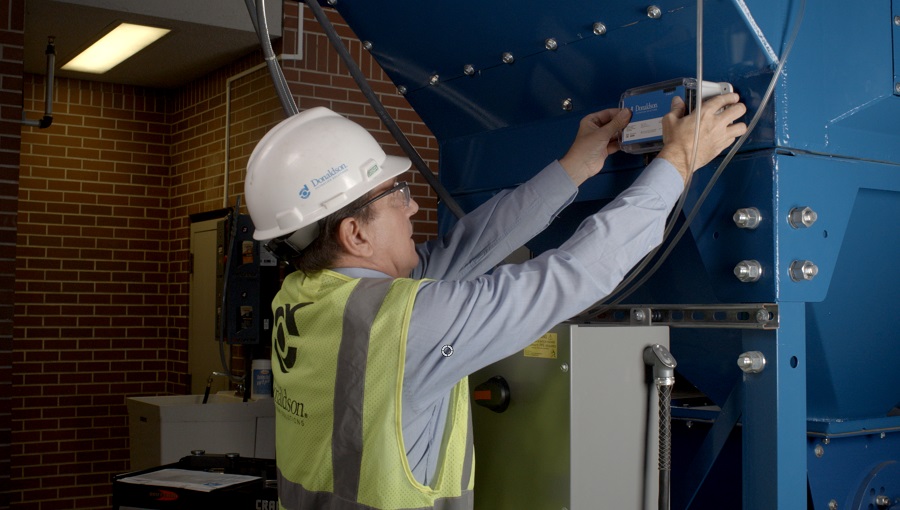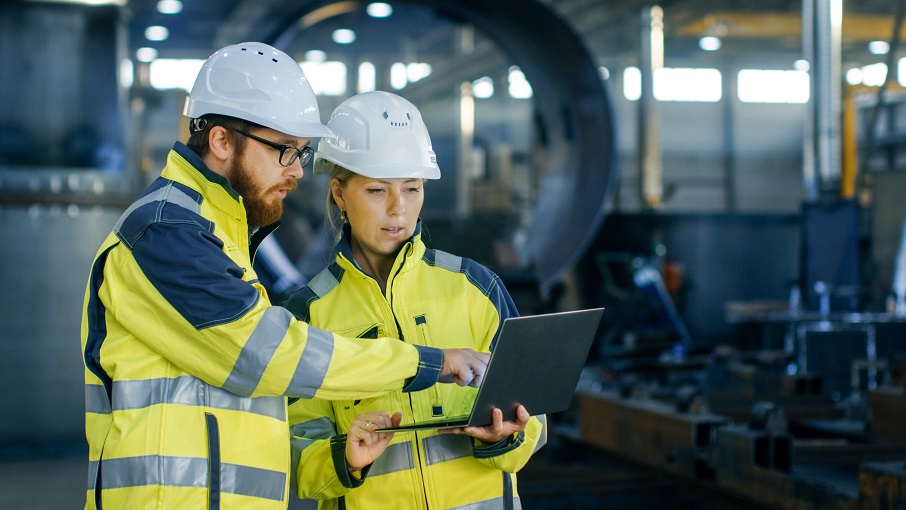

Ensuring optimum performance from a facility’s industrial dust and fume collectors can be a time-consuming process can offer room for errors. However, IoT-based remote-monitoring technologies can dramatically minimise air pollution and maximise productivity in factory settings.
Automation has come to almost all areas of the factory floor but there is one notable exception, where many facilities still favour the ‘clipboard and pen’: the monitoring of air quality and emissions. It’s a curious omission, especially considering that delivering better air quality and avoiding dust build up is a central part of just about every company’s Health & Safety remit. The issue deserves revising too given the current climate and the fact so many manufacturing companies are looking to accelerate to Industry 4.0 technologies for a post-pandemic world, as this article from McKinsey so perfectly encapsulates.
The responsibility for keeping the air clean in a factory, falls on the facility’s industrial dust and fume collectors. These are designed to draw in dirty indoor air through a network of hoods and ducts, filter out particulates, and exhaust filtered air. They are generally robust pieces of equipment that will operate efficiently for years, presuming they are subject to a professional and regular maintenance program.
However, the failure of many facilities to implement a program of systematic monitoring for these vital pieces of equipment is an opportunity lost. It means hidden problems can be allowed to develop that lead to filter failure, escalating costs, unnecessary downtime and lost productivity.
Three-step program Health & Safety professionals have a vested interest in ensuring optimum performance from a facility’s industrial dust and fume collectors. However, as mentioned earlier, many facilities will still rely on “clipboard and pen” processes for managing this. This is true even in larger, plants where there are often automated monitoring systems in place to track other areas of operation, but not ancillary dust collection.
Because of this, Health & Safety often find themselves working with staff on the shop floor to manually record data from the dust and fume collectors. This can be an arduous process, that also offers too much room for error. It involves recording and logging data over days or weeks, with written notes transferred to a compliance report. To make matters worse, this often results in a significant time lag with out-of-date, and potentially inaccurate, information.
However, IoT-based remote-monitoring technologies, such as Donaldson’s iCueTM, can dramatically modernize this process by digitizing it. Using a network of connected sensors combined with a user-friendly interface, remote dust collector monitoring can be automated, providing comprehensive real time data. What’s more a wider range of data can be assessed to ensure effective monitoring, including three critical measures:
- Differential Pressure
- Particulate Trends
- Relative Airflow
Differential Pressure (DP) Differential Pressure (DP) is the difference in air pressure before and after the filters in a dust collector. It is the most common indicator in assessing the health of a dust collector and will generally tell us that a dust collector is functioning normally. So differential pressure is a crucial metric for reporting purposes.
For the Health & Safety leader in a facility, understanding an acceptable DP range for the dust collectors is critical to running a healthier workplace. Once this level has been established and understood, any deviations could indicate that there is an issue such as clogged filters, which left unaddressed can cause long-term damage.
A rise in DP from a pre-determined level can prompt an immediate filter change, whilst a significant drop in DP can indicate damage to filters. When differential pressure is over-laid with relative airflow (which we will talk about later), the Health & Safety leader can observe the filters’ condition and detect when the fan is no longer able to maintain designed flow through the increasingly-loaded filters.
At a given pre-set DP, the filters can be assumed to be at their terminal loading and be changed proactively rather than waiting until an issue arises.
Particulate trends The second important indicator when monitoring the health of filters is particulate trends. Changes in the dust particulate can signal that filter is not performing within the factory’s regulatory limits. For example, unless we monitor particulate trends, a small dust leak from the filter could go unnoticed. Digital monitoring technology such as Donaldson’s iCueTM places a sensor at the exhaust vent of the dust collector to monitor changes in particulate in suspended air. A rising particulate trend could indicate that a filter is damaged or that there is an air blockage.
Relative airflow The final important performance indicator for a filter monitor is relative airflow. In a factory setting, both inadequate, or excessive airflow can present serious issues. Inadequate air flow in a filter may mean the unit is unable to keep up with a facility’s dust output. If the collector is unable to pull dust away through to the hopper, the dust can settle inside the ductwork or facility and pose a serious fire hazard.
The relative airflow refers to the volume of air which is drawn into the collector through its hoods and vents. A dust collector operates on the same principle as a household vacuum cleaner, requiring adequate suction strength to effectively pick up dirt from surfaces. Like particulate trends, relative airflow can be measured and monitored with a sensor. The sensor is placed on the filter’s dirty side that reads static pressure coming into the dust collector.
Remote monitoring In addition to maximising accuracy, one of the key advantages of using monitoring technology versus the traditional “clipboard and pen” approach is that it facilitates remote working, again a topic that is increasingly on the agenda in our post-pandemic world. This supports health and safety policies by minimising personnel on site. It also allows those staff on the factory floor to focus on production rather than troubleshooting filter systems.





